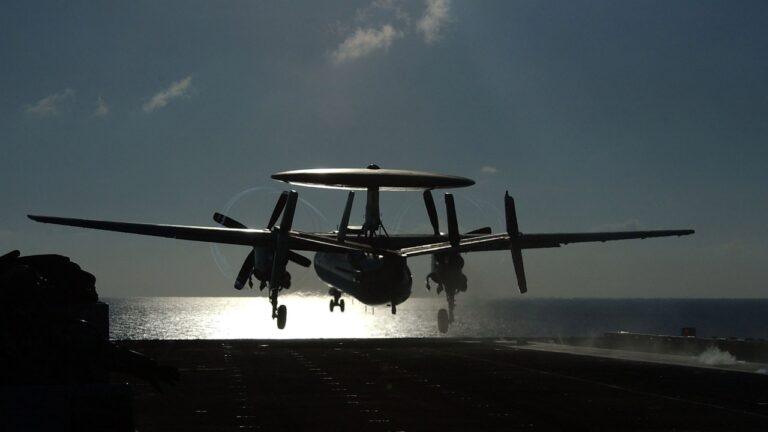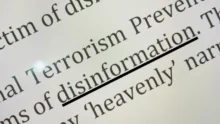South China Sea : Gate to Global Disaster?

Naturally, these conflicting territorial claims have set the ground for growing tensions and, on the limit, for a potentially very dangerous military conflict. Considering that such war might drag into its front line both China and the United States, it is easy to understand why the South China Sea may ignite the next global war, which would also, for many years, devastate the world economy as we know it today.
Predictably, all these countries claim areas of the vast South China Sea. What seems surprising is that China alone has claimed rights over approximately 90% of all this area, even in islands located inside the Exclusive Economic Zones of other nations.
Any map of the South China Sea immediately highlights the fact that it is predominantly surrounded by the Southeast Asian nations. It would have been more appropriate to name it “Southeast Asia Sea”. China borders this Sea along a small minority of its perimeter. Countries like Vietnam and the Philippines encompass a big part of this maritime perimeter but significant extensions of it are also adjacent to Malaysia, Indonesia, Brunei, continental China and, to a more marginal degree, to Taiwan, Thailand, Singapore and Cambodia.
For the public opinion, namely in the West, any mention of tensions in the South China Sea seems a curiosity about some kind of exotic problem somewhere in a distant place which most cannot even pinpoint on a map. Yet, this brewing conflict, like the contentious issue of Taiwan, may bring all the world to the most destructive war since World War II.
The history of the world has always witnessed abundant territorial conflicting claims. But contrary to the distant past, the international community now has forged a vast set of principles, treaties, procedures and organizations whose purpose is basically the establishment of common conduct rules to avoid confrontation. In other words, we have set a framework of international law.
All the countries involved in the South China Sea dispute, including China, are formal members of that global law-abiding community. In 2016, the Permanent Court of Arbitration, at the Hague, rejected China’s territorial claims in the South China Sea.
Logically, what is at stake is not just a substantial area of water. The South China Sea is dotted with atolls, reefs, rocks, shoals and tiny islands, many of which can barely be seen during high tide. They are mostly distributed among a few archipelagos, namely the Spratly Islands and the Paracel Islands. The density of land in this sea is microscopic. The South China Sea comprises around 3.5 million square kilometers but its more than 250 islands and reefs have a total land mass of less than 15 square kilometers at low tide. Nonetheless, these tiny pieces of land are scattered in the middle of the waters through which flows over 1 third of all world maritime transportation of goods that keep world economies and markets operating.
Control of these sea lanes is a major strategic asset. After all, this waterway is important to connect the productive economies and the consumption markets of the most vital pillars of the world economy – the North Atlantic (America and Europe) and East Asia. Each tiny island or reef of the South China Sea, if controlled by any particular nation, projects a presence over a vast area. Besides, this area is blessed with important fishing grounds and its seabed is rich in oil and natural gas.
Given the context of 10 nations laying conflicting claims over the islands and reefs of the South China Sea, it would be wise and constructive to invest in negotiations, to avoid turbulence and military conflicts. However, in 2014 China began dredging operations in contested atolls of the Spratly. Even after the 2016 international arbitration court ruled that China’s territorial claims are unfounded and that any Chinese works or buildings there are illegal, China built there, against virtually all nations in the region, artificial islands, airstrips, military facilities, a big radar station, hangars for military airplanes, buildings and facilities for anti-ship and surface-air missiles.
For a big new power like China, which aspires to be internationally trusted, liked and respected, and which aims to be the predominant power of Asia and a world-class player, it is self-destructive to convey to the world its current behavior in the South China Sea.
Within the vocational purpose of standing as the leading power in Asia, China strongly bets on the development of a powerful navy and it resents the fact that, in fact, the strongest “Asian” naval power is the United States with a major capacity deployed to East Asian waters.
Taking over pieces of contested territory in a strategically sensitive area and even militarizing them sows international and regional mistrust, transmits an aggressive image that lowers China’s prestige and increases risks of very serious armed confrontation.
In the case of an armed conflict the region would become too dangerous as a sea lane for shipping. The alternative would be a longer route around Australia, implying higher costs of goods in the world (and in China itself). The whole Southeast Asian region would become an area of high risk and maritime insurance would get much more expensive, inflating even more the costs of goods worldwide.
Global supply chains would be disrupted. Markets and economies would be severely hit in Southeast Asia, in China, in the West and virtually everywhere. The military destruction might be daunting. The world would be submitted to painful shockwaves and East Asia might take many years to recover after such war and the subsequent economic convulsion. The costs would be dramatic for the world, for East Asia and maybe even more for China itself. The current context is hardly the rational choice for anybody.
China also looks at the South China Sea as a buffer zone to provide additional protection and to facilitate the operations of its submarines. This country tries to guarantee ample access of its fishing fleet to this region, while dissuading the fleets from nearby nations to do so.
Considering that China is occupying and militarizing islands and reefs in what the global community considers international waters, the American navy also justifies its patrolling operations as a legitimate action to ensure and protect the freedom of maritime navigation across the area.
China may count on the world’s avoidance of a military conflict to proceed on a step by step basis, taking over territory, establishing bases and spreading a mantle of strategic presence in the South China Sea. But if an armed conflict arises, China knows it will lose it. That would translate into a humiliating loss of face, great domestic instability and an economic downturn.
This is a tale of proud affirmation by a great country which was repeatedly humiliated in the last two centuries. It is true that most of the world still has difficulty in understanding modern China and often treats it unfairly. But it is also true that China still does not properly understand the world and interacts with the international community in ways that harm the country’s global image, like currently in the South China Sea.
China has almost no (genuine) friends and allies in the world and to be a respected global or regional player it needs to create respect and empathy, which its moves in this region are corroding, while helping its international critics. Besides North Korea, no nations in East and Southeast Asia trust China. These attitudes in the South China Sea reinforce the regional fears about China and its military threat. That is one of the fundamental reasons why all Southeast Asian and East, South Korea and Japan wish for the protective presence of the US navy.
Over the years Southeast Asian and ASEAN nations have stood fearful and united against China’s maritime expansion into the South China Sea. Indonesia has changed its strategic options under current President Jokowi, who switched to a more unilateral approach to negotiate with China. Indonesia has strongly opposed China’s attempts to operate in the Indonesian Natuna Islands, which contain relevant fish stocks and oil and natural gas reserves.
Now Indonesia has been betting on relevant infrastructural investments from China which may, or may not, fully materialize. The suspicions about the future regarding the Natuna archipelago remain. China is actually trying to moderate Indonesia’s stance in the block of ASEAN countries. Indonesia is the largest Southeast Asian country and it controls the straits (Malacca, Sunda and Lombok) that ultimately link the South China Sea to the rest of the world.
If China continues taking over and militarizing contested islands and reefs in this explosive area, the South China Sea may turn into the gate to the next big war, directly involving a superpower and an aspiring one. Maybe those around the world who now cannot find the South China Sea in the map will, overnight, learn from dramatic TV news where in the map this place is. For the worst reasons.



